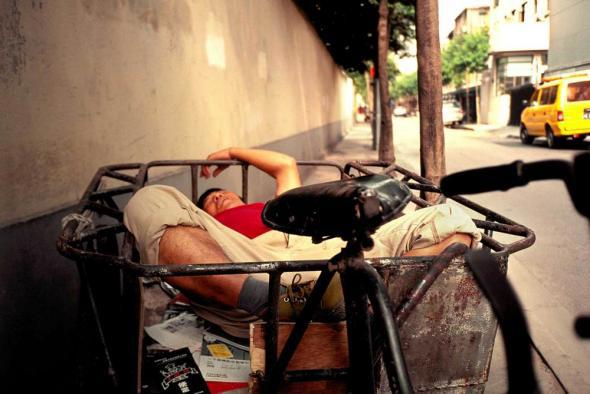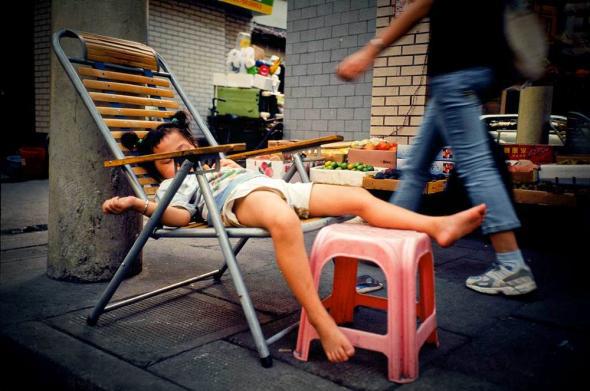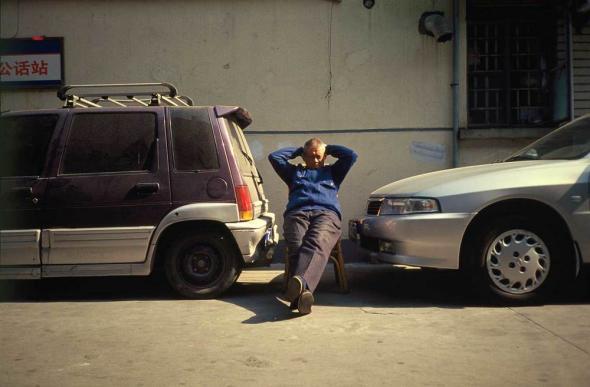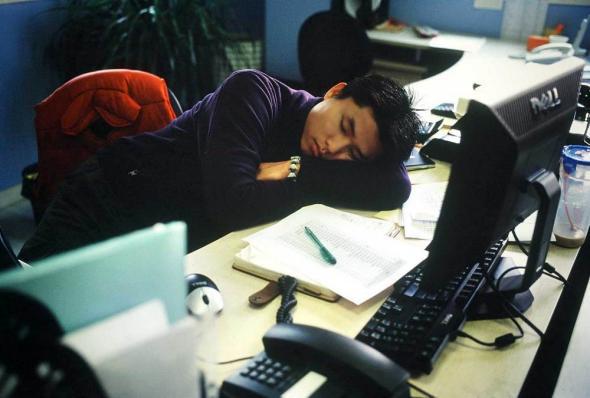During his first trip to China in 2004, photographer Eric Leleu stumbled upon a fascinating cultural phenomenon. As he moved around Shanghai, he noticed people from different walks of life—businessmen, restaurant workers, the elderly, and children—napping in public. He had discovered, he realized, a common afternoon practice in a society that “wakes up early and works long days.” Leleu decided to capture the public napping in his photography.
“Employers nap as well,” Leleu told me. “It’s just a different perception of body rhythm. People go for a break when we go for a caffeine boost in the Western world.”
One month into his travels, Leleu had photographed enough nappers to compile an initial portfolio. “I did not chase them,” he insisted. “The ‘Dreamers’ came to me.” He encountered nappers so frequently that after four years, Leleu’s draft expanded into his first collection, appropriately titled Day Dreamers.

Courtesy of Eric Leleu
Originally from northern France, Leleu completed a master’s degree in economics. After graduation, he altered his life plan with a swift move to Shanghai, where he began pursuing photography full time.
With its ground-level views, Day Dreamers is a personal exploration of unconsciousness. Intimate yet bold, Leleu’s images interpret sleep as a powerful pause in rapid daily routines. Unaware of passers-by—including Leleu himself—his subjects defy the social world, answering a natural call to rest, relax, and restore.

Courtesy of Eric Leleu

Courtesy of Eric Leleu
“It was a funny process shooting them,” Leleu told me, “a jubilation. Most of them did not even notice I took a photo. Sometimes, other Chinese people saw me shooting someone sleeping and laughed. It seemed amusing for them as well.”
Occasionally, one of his “Dreamers” would wake up, drowsy and surprised to see a foreigner with his lens pointed in his or her direction. But by indicating his friendly intentions, Leleu would allow his subjects to usually fall back asleep. He kept the stills of the startled subjects, however, noting their potential for a future spinoff series, “Waking Up Dreamers.”

Courtesy of Eric Leleu
Comprising both landscapes and intimate portraits, the images in Day Dreamers share similarities in framing. I talked to Leleu about his style, namely his use of a low, planar vantage point.
“I like the power of frontally shot photographs,” he explained. “I started shooting the series from very close, focusing on faces with sometimes mouths opened. But I soon realized the context was just as interesting as the ‘Dreamer’ itself. So, I slowly stepped back to include more of the surroundings.”

Courtesy of Eric Leleu
Compared with his more recent projects, Leleu likes that Day Dreamers is “on the edges of blurry frontiers, between different photographic ‘drawers’: documentary, conceptual, street, and social.” Technically, Leleu’s use of color, shadows, and light are consistent across the series and convey the stark contrast of reverie against urban reality.
“My idea was to show another face of China,” he said, “a more tender face compared to the one described in mainstream media. Something more human.”

Courtesy of Eric Leleu
In his work, Leleu achieves a stunning vision of sleep. Typically considered a private function, this gallery of public napping offers a broader look at a basic need. In an exposed state, Leleu’s subjects find a fleeting moment of solitude—a place of peace shared by all humanity
To view more of Eric Leleu’s photography, visit his website.
